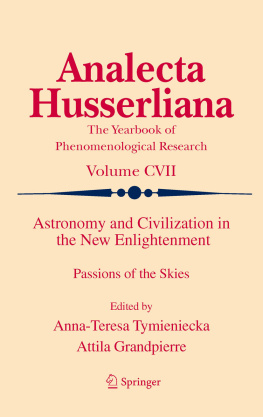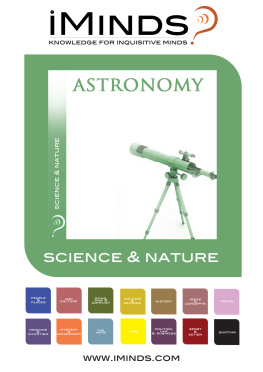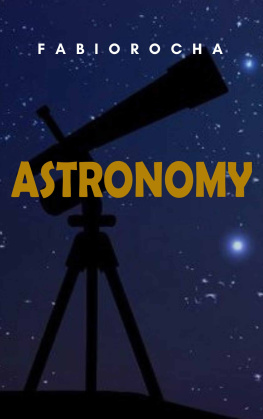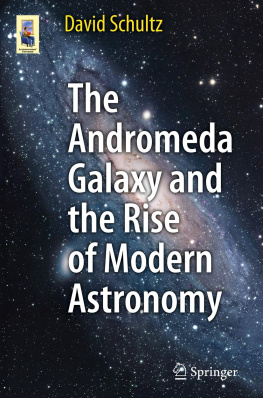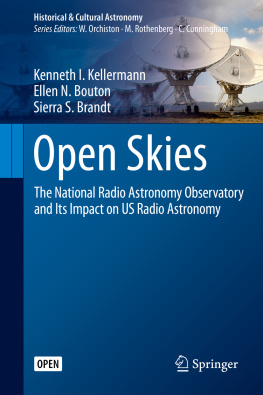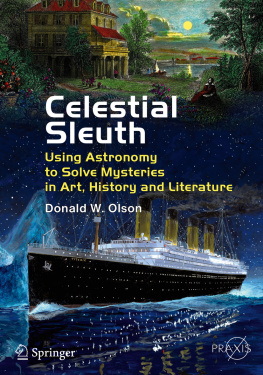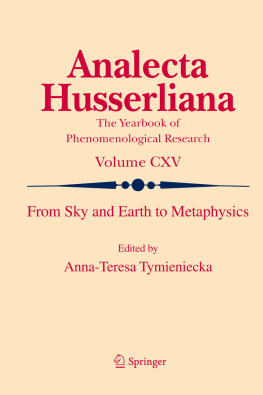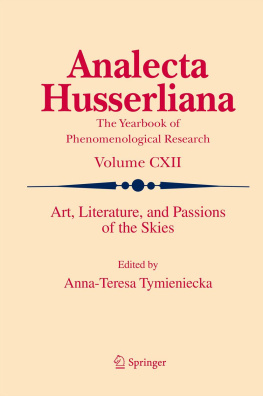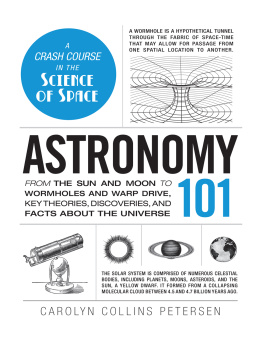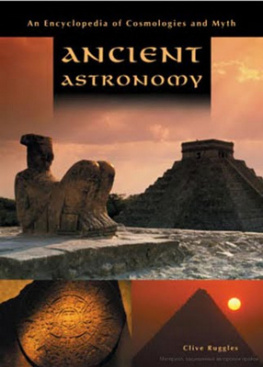Anna-Teresa Tymieniecka and Attila Grandpierre (eds.) Analecta Husserliana The Yearbook of Phenomenological Research Astronomy and Civilization in the New Enlightenment Passions of the Skies 10.1007/978-90-481-9748-4_1 Springer Science+Business Media B.V. 2011
The New Enlightenment: Cosmo-Transcendental Positioning of the Living Being in the Universe
The Modern Transformation of Science and Philosophys Seeking Fresh Metaphysical Grounding
Contemporary science has seen the shattering of the classical postulates of precision and exactitude by which objects and their mechanistic relations were to be isolated. The objective order of the universe that was once manifest is no longer there for us.
This development is owing to the introduction of the once ignored vector of time into physics. Today the natural sciences begin to resemble the social sciences. The unforeseeable, the unpredictable is now allowed. Determinism and freedom, necessity and chance are no longer sharply dichotomous.
We have moved to viewing a hazy, imprecise, fleeting reality. Even the geometry by which reality is modeled has changed. Benoit Mandelbrots fractal geometry is more suited to capturing the turbulence, the dislocation and irregularity, found in nature. The traditional formalism of mathematics has been surpassed by an approach that allows human intuition to contribute to the representation of nature.
This approach was pioneered by Poincar. In pondering the geometric properties of the functions of differential equations, he drew on Nikolai Lobachevskys non-Euclidean hyperbolic geometry, which denied Euclids postulate that two parallel lines will remain parallel to infinity. Then, surprisingly, Poincar found that through his new visualization of differential equations he could explicate the stability of the solar system, providing a resolution of the three-body problem in the plotting of orbits. Poincar grasped the distribution in phase space of points of stability and instability that yet make up a coherent whole. He became the first person to discover a chaotic deterministic system. This has found further application in the study of all chaotic deterministic systems.
Poincar thought this mix of stability and instability to be beyond visualization when it came to more complex systems. But with the power of computers, Mandelbrots fractal geometry is now allowing that visualization. And mathematician Ren Thom built on the concept of phase space to paint a universal morphology that takes into consideration natures relatively stable points as well as the various types of its constructive becoming in the regular and irregular (catastrophic) occurrences that introduce discontinuity into the morphological progress and lead to some mutation within the type (see his Stabilit structurelle et morphognse [1972]).
For Poincar, Mandelbrot, and Thom visual intuition is key to our capturing reality. We may even speak of an aesthetic expansion of the discipline of mathematics. The abstract science of mathematics humanizes itself.
Today the role of the subjective in scientific inquiry is, therefore, much appreciated. But the historical studies of phenomenologist Alexandre Koyr showed how much the element of the subjective was always there. Alexandre Kojve, having absorbed Koyrs work and having absorbed too Niels Bohrs interpretation of Heisenbergs finding that being observed changes the state of whatever is observed rendering the apprehension of exact causality impossible, further elucidated the most significant factor of the subject, the living concrete individual who as an inquirer envisages everything around him/herself. The role of the subject is now universally recognized in physics and the rest of science.
Strikingly, in his LIde du dterminisme dans la physique classique et dans la physique moderne (1932; Paris: 1990), Kojve saw that we should not identify the subject with a mathematical, abstract point, uniform and unchangeable, nor with its biological corporeity, nor as a psychological agent. Here we are at the threshold of our own phenomenology of life and its ontopoiesis, which has as its focus the creative condition of the investigator, whether experimenting or observing or speculating. The Creative Human Condition provides us with the Archimedean point from which the unfolding flux around us may be probed, for there is correspondence between that unfolding and our own. Indeed, our inquiry takes us beyond correspondence to convergence. It is from the point of investigation into human creative genius that it is appropriate to enter into exploration of reality.
Given that the subject is to be seen as belonging to the same ontological realm as the world and as interacting with it, we cannot continue to consider cognition to be the main factor in scientific experience. What is key is the creative virtualities subtending the mind the creative imagination inspiring it and the creative act bringing that imagination to its unique fruition. For in our investigation we unroll and circumscribe the creative compass of all the spheres of reality/life in which the living creative subject has to participate in order to assume the role of the observer or experimenter, or discoverer, inventor, creator. I submit that only the creative mind of the human being can fulfill all the conditions set by Kojve, first, and most significantly, by legitimating its extraordinary vantage point and second by introducing us into the hidden spheres of reality itself.
Our vision accords with that of Leibniz, for whom each living being, through a monad, reflects the entire universe. The human mind is positioned to descend into the inner workings of becoming and in the disorder there confronted recognize the wealth of rationalities projected as chance and necessity conjoin in a constructive game. The human creative act may progressively penetrate into all the spheres of existence, of life, the reality in which this station is not always openly rooted but out of which it has developed, maintaining permanent ties. Thus we may connect and harmonize the elusive, discrete, seemingly worlds apart factors of becoming.

